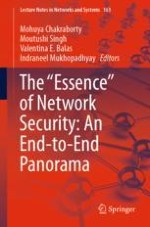2021 | OriginalPaper | Buchkapitel
Role of Cryptography in Network Security
verfasst von : Anindita Sarkar, Swagata Roy Chatterjee, Mohuya Chakraborty
Erschienen in: The "Essence" of Network Security: An End-to-End Panorama
Verlag: Springer Singapore
Aktivieren Sie unsere intelligente Suche, um passende Fachinhalte oder Patente zu finden.
Wählen Sie Textabschnitte aus um mit Künstlicher Intelligenz passenden Patente zu finden. powered by
Markieren Sie Textabschnitte, um KI-gestützt weitere passende Inhalte zu finden. powered by
